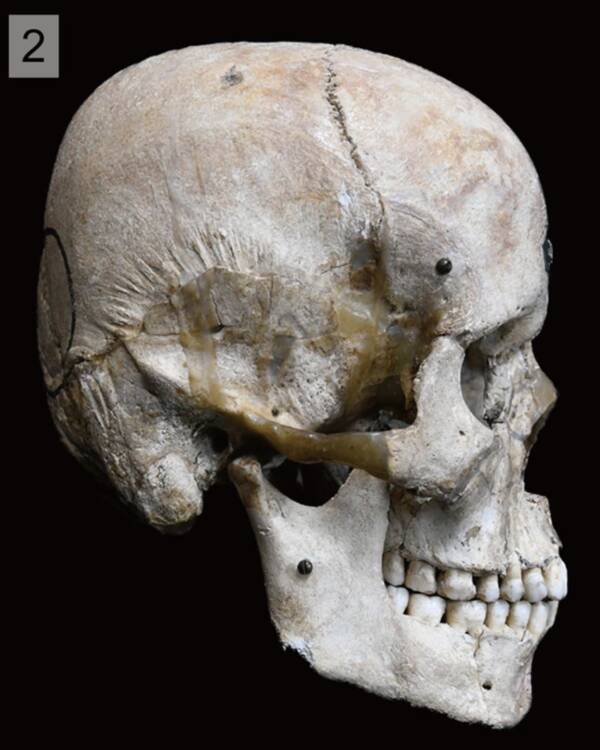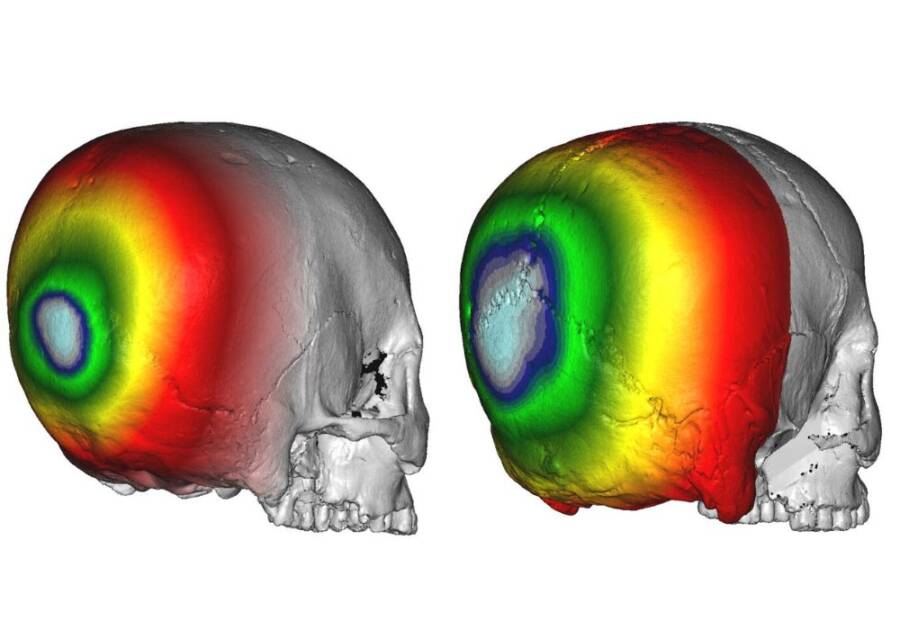For decades, archaeologists have wondered why the skeletons unearthed on the Japanese island of Tanegashima had flattened heads — and now a new study is finally providing answers.
In 1957, researchers began unearthing skeletons on the island of Tanegashima in southern Japan, which had once been home to the Indigenous Hirota people. The archaeologists soon noticed that each skull they dug up was oddly shaped, but for decades they weren’t sure if the deformations were intentional or if they were caused by unknown natural influences.

PLOS ONEPer the study authors, the Hirota skulls are “characterized by a short head and a flattened back of the skull, specifically the occipital bone and posterior parts of the parietal bones.”
Now, scientists from Japan’s Kyushu University and the University of Montana have determined that the misshapen skulls were most likely the result of artificial cranial deformation (ACD).
In a study published in PLOS ONE, a team of biological anthropologists and archaeologists led by Noriko Seguchi of Kyushu University compared the Hirota skulls to those of other groups who lived in Japan around the same time — between the third and seventh centuries C.E.

The researchers used 2D images and 3D scans to analyze the shape of 19 Hirota skulls, nine skulls of the Jomon people of Kyushu Island, and 28 skulls of the Doigahama Yayoi people. They found that the Hirota skulls were the only ones that were deformed. What’s more, they had bulges and asymmetrical shapes that indicated the distortions did not occur naturally.
“Based on a comprehensive review of the results,” reads the newly-released study, “we concluded that Hirota site crania were intentionally modified.”

The Kyushu University MuseumOne of the skeletons found on Tanegashima.
The researchers also determined that an equal number of male and female skulls were deformed, with no difference in the shape between sexes.
According to Live Science, ACD has been practiced by various groups throughout history, such as the Huns in Central Asia, the Maya, and other Indigenous tribes in North America. Some groups disfigured their children’s heads for religious reasons. And medieval women in parts of Europe artificially elongated their skulls as a symbol of beauty and high status.
Certain groups living on the Pacific nation of Vanuatu still practice head binding today. According to the Australian Museum, the General of South Malakulan said of the custom, “We elongate the heads of our children because it is our tradition and it originates with the basic spiritual beliefs of our people. We also see that those with elongated heads are more handsome or beautiful, and such long heads also indicate wisdom.”
While these cultures traditionally participated in ACD to display group affiliation or social status, archaeologists are still unsure why the Hirota people practiced cranial modification. “Although the motivation of the practice is unclear,” wrote the researchers, “the Hirota people may have deformed their crania to preserve group identity and possibly aid in the long-distance trade of shellfish.”

Seguchi Lab/Kyushu UniversityA deformed Hirota skull (right) compared to a Yayoi skull from a similar time period (left).
The Hirota people likely started wrapping or pressing the skulls of their infants from an early age to create the desired head shape. The crania discovered at the Hirota site were shortened and flattened at the back, with “depressions in parts of the skull that connects the bones together,” Seguchi said in a press release.
Now that the researchers have determined the skulls of the Hirota people were deformed intentionally, they hope to delve into why the practice was popular among the group — and whether it had anything to do with the lavish shells from hundreds of miles away found buried with the skeletons.
Seguchi noted, “We hope that further investigations in the region will offer additional insights into the social and cultural significance of this practice in East Asia and the world.”
After reading about the deformed Hirota skulls, learn about the elongated skulls found in Hungary that provide insight into the fall of Rome. Then, read about the knight with a deformed skull who was found buried beneath Notre Dame.





